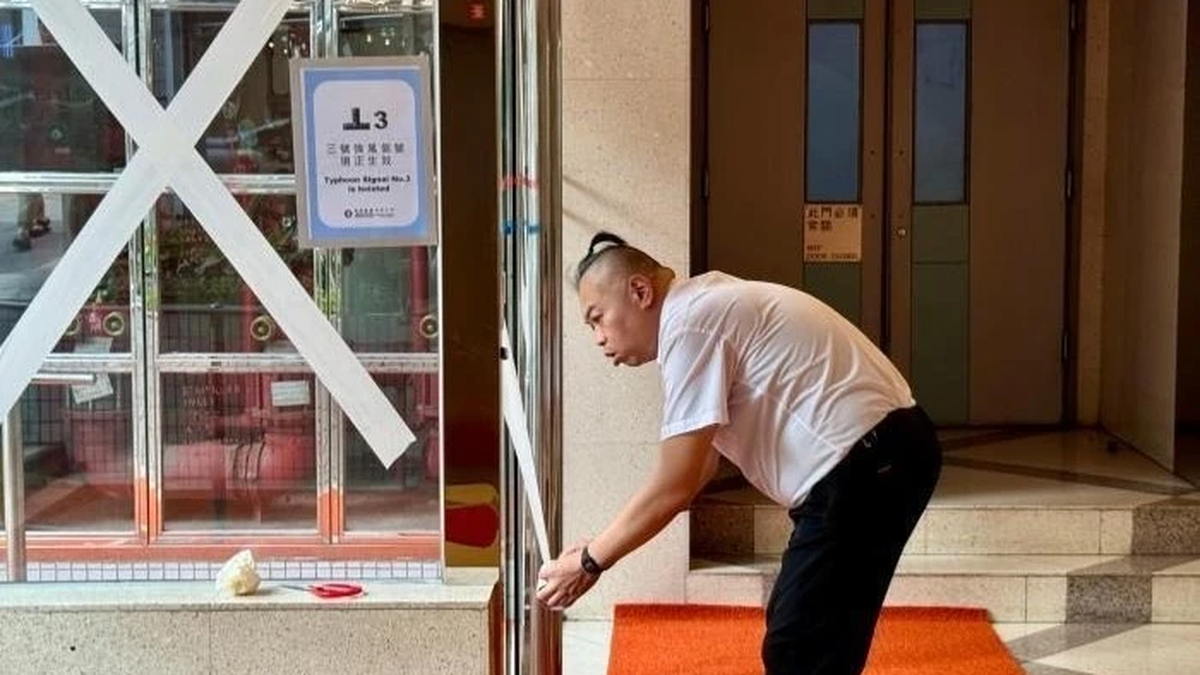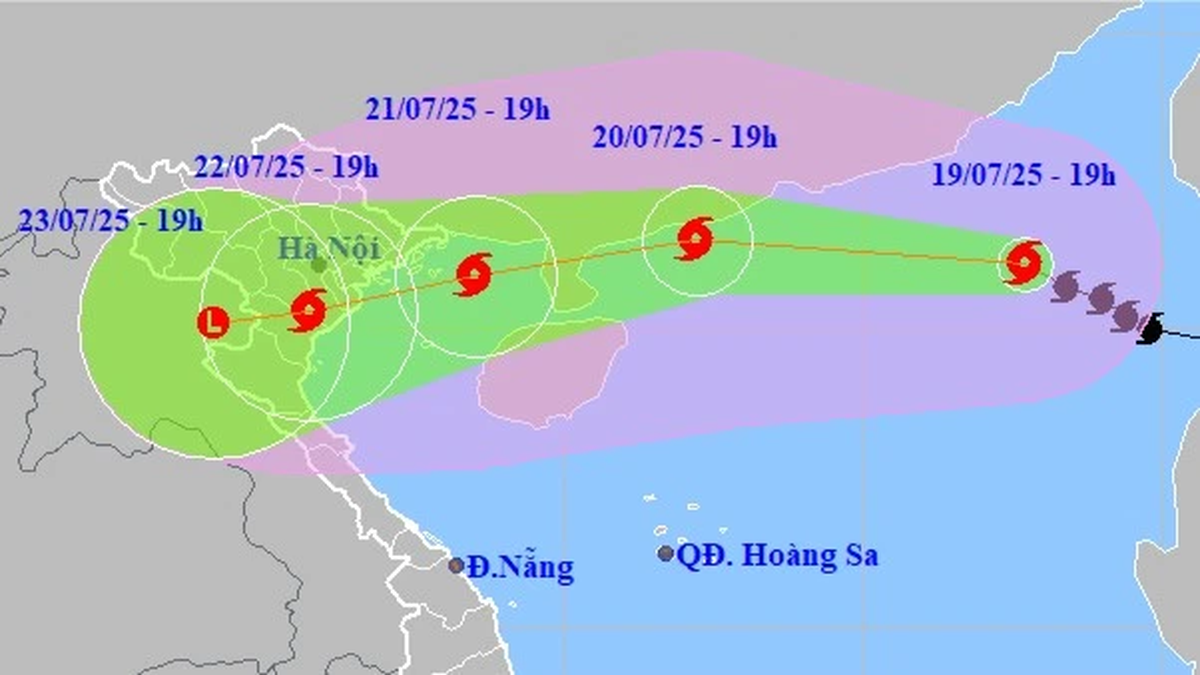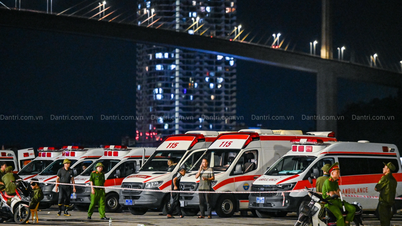In Hanoi , the average house price is 44 million VND/m2 of construction area, up 8% quarter-on-quarter, while the primary selling price in Ho Chi Minh City has dropped to 67 million VND/m2 of "net" area.

According to the Savills Vietnam Real Estate Price Index Report for the first quarter of 2024 (SPPI) released on June 24, the housing segment in Hanoi and Ho Chi Minh City is moving in opposite directions, while the housing price index in Hanoi in the first 3 months of the year tends to increase sharply, while that in Ho Chi Minh City decreases slightly.
Meanwhile, the office segment recorded stable performance in both markets.
Specifically, in Hanoi, the housing index increased by 8 percentage points compared to the previous quarter to 142.5. The index has increased by 37% since bottoming out at 104.1 in the third quarter of 2019.
The average house price is 44 million VND/m2 of construction area (NSA), up 8% quarter-on-quarter.
Hanoi is prioritizing infrastructure development, creating immediate real estate demand and a foundation for sustainable growth. Key projects will be the driving force for affordable housing projects.
In Q1/2024, the absorption rate reached 41%, up 15 percentage points quarter-on-quarter and 27 percentage points year-on-year; the Grade B segment accounted for 88% of total transactions.
Large projects accounted for 71% of total transactions, reflecting continued demand for suburban areas.
According to experts at Savills Vietnam, confidence and stability are returning to the real estate market amid low bank deposit interest rates and new comprehensive regulatory reforms, including the Laws on Real Estate Business and Housing as well as supportive fiscal measures from the Government .
The Hanoi Office Index recorded 69 points, stable on a quarterly and annual basis. The occupancy rate of Grade A was 88%, up 3 percentage points compared to Q4/2023 and 8 percentage points compared to the same period last year.
Grade B occupancy was 85%, stable QoQ and down 1 ppt YoY, while Grade C had an occupancy rate of 91%, down 1 ppt QoQ and YoY.
The Central Business District (CBD) office index fell 1 percentage point year-on-year to 87.
The rental price of VND783,000/m2/month increased by 2% QoQ but decreased by 1% YoY. The occupancy rate was also stable QoQ and increased by 2 percentage points YoY to 92%.
The non-CBD Office Index was stable QoQ at 81 and up slightly 1 percentage point YoY.
Occupancy increased 1 percentage point quarter-on-quarter and 2 percentage points year-on-year to 87%. Rents were stable quarter-on-quarter and up 2% year-on-year to VND485,000/m2/month.
In Ho Chi Minh City, the housing price index fell 2 percentage points from the previous quarter to 123 after many projects were suspended. Primary prices also recorded a 3% decrease from the previous quarter to VND67 million per "net" square meter.
According to Savills Vietnam, in the context of declining transactions and weak homebuyer confidence, developers are showing caution by maintaining stable selling prices and increasing discounts.
Some investors have suspended projects to adjust sales policies (incentives, payment schedules, free utilities, etc.).

The Ho Chi Minh City Office Index increased 1 percentage point quarter-on-quarter and 2 percentage points year-on-year to 98.
The index in the Central Business District (CBD) increased by 1 percentage point compared to the previous quarter but decreased by 1 percentage point compared to the same period last year to 107 points.
Occupancy rate decreased 1 percentage point QoQ and 4 percentage points YoY to 90% due to new project The Nexus having low occupancy rate of 55%.
Rental prices increased 3% quarter-on-quarter and 7% year-on-year to VND1 million/m2/month.
The non-CBD index was stable compared to the previous quarter and increased 6 percentage points year-on-year to 114 points.
Office rents improved across all 15 districts, up 1% quarter-on-quarter and 11% year-on-year to VND595,000/m2/month.
Occupancy rate reached 89%, up 1 percentage point from the previous quarter but down 1 percentage point from the same period last year.
Similarly, according to Savills Vietnam Report, in Ho Chi Minh City, the construction cost index has increased steadily since the end of social distancing in Q3/2022.
By the fourth quarter of 2023, the construction cost index increased by 3 percentage points year-on-year to 119.03 due to increased labor costs and construction material prices.
The labor cost index rose 6.5 percentage points year-on-year to 111.6 due to labor shortages and high demand.
The construction materials price index increased by 2 percentage points year-on-year to 124.06 due to supply shortages and inflationary pressures, with significant increases in the hot asphalt, paint and geotechnical materials groups.
Meanwhile, in Hanoi, the construction price index in the first quarter of 2024 was 105, stable compared to the same period last year. The construction price index has remained around 105 since the second quarter of 2022.
Construction material prices began to increase in the first quarter of 2024 after consecutive decreases in 2023. The construction material price index in the first quarter of 2024 was 106, up 0.7 percentage points from the previous quarter but still down 0.6 percentage points from the same period last year.
The labor price index in the first quarter of 2024 was 101, stable compared to the previous quarter and up 0.6 percentage points compared to the same period last year. This index remained at 100 from the first quarter of 2021 to the third quarter of 2023 before increasing slightly to 101 from the fourth quarter of 2023./.
Source: https://baolangson.vn/savills-viet-nam-chi-so-gia-nha-o-ha-noi-tang-manh-tp-ho-chi-minh-giam-nhe-5012704.html

























![[Photo] National Assembly Chairman Tran Thanh Man visits Vietnamese Heroic Mother Ta Thi Tran](https://vphoto.vietnam.vn/thumb/1200x675/vietnam/resource/IMAGE/2025/7/20/765c0bd057dd44ad83ab89fe0255b783)









































































Comment (0)